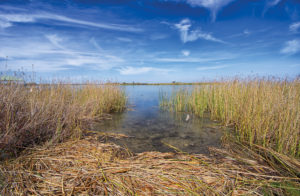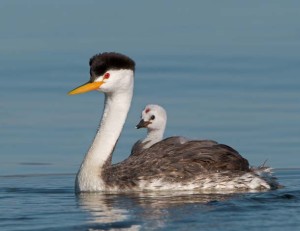The San Francisco Bay Area and Central California coast are full of wonderful places to explore in a kayak, from the Russian River south to Monterey and from bayshore wetlands to the wave-swept coast. We’ve compiled some information to help you kayak responsibly—and decide where to go and how to get out on the water once you get there.
RESPONSIBLE KAYAKING
Before you put your paddle in the water, it’s important to understand that you’ll be heading out into the homes of wild creatures that can be quite sensitive to human disturbance.
The Bay Area Sea Kayakers group (www.bask.org) publicizes a list of guidelines called “PADDLE,” adapted from “Seals and Sea Kayaks” published in the spring 1991 edition of Sea Kayaker magazine by Winston Shaw, Director, Coastal Maine Bald Eagle Project.
PASS AFAR
Maintain enough distance to keep animals from feeling threatened. Stay at least 300 feet away from seals, birds, and other wildlife. It is preferable to paddle at high tide in places like Bolinas Lagoon, because, at low tide, birds feed and seals haul out to rest on the mudflats.
APPROACH PARALLEL
Maintain a parallel course to the animal distribution, which is believed to be less threatening than a direct approach. Pass at a constant speed. Do not slow down, speed up, or swing closer to seals or birds.
DISCRETE VIEWING
Restrain your impulse to get closer: If you get too close, wildlife will leave. As you pass, do not engage in any “stalking” activity, or attempt to approach animals undetected. To observe wildlife behavior, use binoculars or a camera with a telephoto lens.
DEFER IMMEDIATELY
If seals begin lifting their heads, or birds begin moving away or flapping their wings, retreat from the area. If seals stretch out their necks or chests higher in the air, back off immediately. If seals start to move toward the water or enter the water, immediately leave the area to avoid prolonged stress on the animals. Backpaddle away from wildlife instead of turning your boat around.
LEAVE ALONE
Do not handle or attempt to “rescue” seal pups that you believe are abandoned or injured. Mother and pup will usually reunite on their own. If you are concerned about a marine mammal, call the Marine Mammal Center at (415)289-7325. They will notify the appropriate agency or respond directly.
EXPLAIN EFFECTS
Tell other paddlers and small boaters how they can help protect wildlife. Marine mammals and migratory birds are protected from harm and harassment by the Endangered Species Act, the National Marine Sanctuary Act, the Marine Mammal Protection Act, the Migratory Bird Treaty Act and the Marin County Open Space District Code. It is against the law to harass wildlife. This includes intentionally causing seals or birds to flush.
Check out the BASK site, www.bask.org, for extensive resources about all aspects of sea kayaking in the Bay Area. Find additional wildlife viewing guidelines from the National Marine Fisheries Service.
GREAT BAY AREA KAYAK DESTINATIONS
Tomales Bay
The calm, wind-protected waters of Tomales Bay are an ideal place for viewing wildlife from a kayak. Pelicans, harbor seals, leopard sharks, bat rays, herons, and egrets are just some of the creatures that visit or make their home in and on this scenic bay. Flocks of scoters and groups of loons and bufflehead take shelter here in the winter from the wilder waters of the ocean. And this past spring, many kayakers observed a juvenile gray whale that took up temporary residence at the north end of the bay for several weeks. There are several beautiful, kayak-friendly campsites tucked away on the bay’s sheltered west side. Camping permits are required. Find out more at www.tomalesbay.net/camp.html.
Take note that winds can pick up in the afternoon and paddling becomes significantly more challenging as you approach the more exposed, northern part of the bay.
Tomales Bay Kayak Outfitter:
Blue Waters Kayaking, (415)669-2600, www.bwkayak.com.
Richardson Bay
Richardson Bay has something to offer all levels of sea kayakers—varied scenery, variable weather and currents, wildlife viewing, sweeping vistas of the San Francisco skyline, and boat traffic, fog, and wind. Gliding along the waterfront, paddlers get a close-up view of Sausalito’s eclectic houseboat communities. Harbor seals, sea lions, pelicans, cormorants, scoters, terns, and herons also visit or live in the bay’s relatively calm waters and along its rocky shorelines. Lucky paddlers might even catch a glimpse of a gray whale that has meandered into this ecologically rich arm of the San Francisco Bay on its way north in the spring.
Sausalito Kayak Outfitter:
Sea Trek, (415)488-1000, www.seatrekkayak.com.
Half Moon Bay
The tranquil waters around Half Moon Bay’s Pillar Point Harbor offer novice kayakers excellent views of this wild San Mateo County coastline. You can even glean a bit of geology out on the water: The evidence of millions of years of seismic activity—uplifting, faulting, and folding—are all startlingly evident when you look back at the coastline from the ocean. There’s an abundance of shorebirds here: Western snowy plovers, California and glaucous-winged gulls, brown pelicans, and sanderlings are just a few of the species paddlers may encounter. Harbor seals, California sea lions, and migrating gray whales also frequent Half Moon Bay.
Half Moon Bay Outfitters:
California Canoe & Kayak, (650)728-1803, www.calkayak.com
Half Moon Bay Kayak Company, (650)773-6101, www.hmbkayak.com
Elkhorn Slough
This rich tidal estuary that meets the coast at Moss Landing, near the center of the Monterey Bay coastline, provides much-needed habitat for hundreds of saltwater, freshwater, and marshland plants and animals. The best way, hands-down, to experience this wildlife diversity is by kayak, giving you the opportunity to view seals resting on the mudflats and sea otters playing in the calm waters of the slough. In summer, kayakers might glimpse the dorsal fins of smoothhound and leopard sharks cutting through the water’s surface. (These small sharks pose no danger to people.) Fall is an excellent time to view migratory shorebirds, when thousands of birds descend upon the slough to feed on the mudflats. September is also the prime time for spotting brown pelicans as they plunge into the slough’s water in pursuit of prey. Elkhorn is an important stopover for the pelicans as they make their way south to breeding grounds in Baja.
Elkhorn Slough Outfitters:
Great Expeditions, (831)425-0390, www.ge-trips.com
Kayak Connection, Moss Landing (831)724-5692, www.kayakconnection.com
Monterey Bay Kayaks, (800)649-5357, www.montereybaykayaks.com
Bair Island
Surrounded by and laced with a maze of winding channels, Bair Island offers novice kayakers a calm, intimate paddling experience just minutes from bayside urban centers. Part of the Don Edwards San Francisco Bay National Wildlife Refuge, this extraordinarily productive tidal marsh is home to endangered salt marsh harvest mice, California clapper rails, and snowy plovers. Countless more common bird species also make their home among the refuge’s tidal flats and pickleweed- and cordgrass-covered marshland. More than 280 bird species pass through the refuge every year. In spring, paddlers have a good chance of spotting harbor seals hauled out along the island’s protected sloughs, where they give birth to pups and nurse their young. Paddle at dusk and you might even glimpse native gray foxes foraging in the marsh uplands.
Bair Island Outfitters:
California Canoe and Kayak, (650)728-1803, www.calkayak.com
Great Expeditions, (831)425-0390, www.ge-trips.com

.jpg)


-300x190.jpg)
-300x225.jpg)